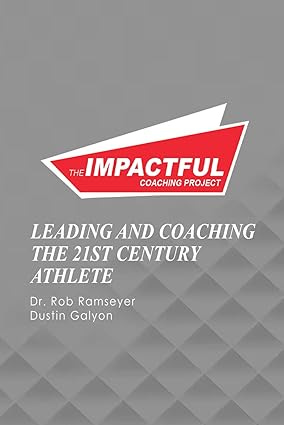Recently on the podcast, I spoke with John Kessel, a longtime teacher of coaches and advocate for better learning environments. He shared a line that was pretty good:
“If Michelangelo was still learning at 85, we can be adapting too.”
St. Peter’s Basilica in Vatican City is among the holiest and most iconic churches in the world. Tradition holds that it sits above the burial site of the apostle Peter. One of its principal architects was Michelangelo, who, at the age of 87, designed the structure’s now-iconic dome. Despite a lifetime of masterworks, Michelangelo famously said: “Ancora Imparo”—Still learning.
Kessel paraphrased it, but the message holds: even the greats never stop learning. Michelangelo—at nearly 90—was was still designing, still experimenting, still sharpening his craft. That mindset is a challenge to all of us.
Coaching as a Learning Competition
Kessel frames it simply:
“It’s not just an athletic competition. It’s a learning competition.”
The best coaches are students first. They keep trying to learn and maintain competence. (Which we write extensively about) They adapt to the athletes in front of them, the information available, and the culture they’re building. Some of these things are complex and some are pretty simple.
One of Kessel’s practical tips: when giving correction, don’t start with the athlete’s name. Start with the teaching point, and add the name at the end. Why? Because if you lead with the name—“Tommy, here’s what you did…”—everyone else tunes out. But if you say, “Here’s what I saw… here’s the adjustment… Tommy, do you see it?”—everyone listens and learns.
What Held Me Back Early On
Early in my career, I tried to imitate my own coach. Coach Mike Gehrer was an incredible leader—full of energy, conviction, and presence. A 10/10 extrovert and motivator. He could rally people without needing to explain himself. But I’m not wired that way.
At first, I taught hitting exactly the way he taught me. And it didn’t translate. My athletes had different bodies, different needs, and more tools (like video) to see inconsistencies. What worked for me didn’t always work for them. I was coaching in a new era trying to be Coach Gehrer. Didn’t work for me in style or in approach like it did for Coach. Trying to be him hurt me.
Eventually, I stopped copying and started adapting. That shift made all the difference.
Growth > Fear
Carol Dweck’s research is essential here:
Fixed Mindset: Talent is static. You have it or you don’t.
Growth Mindset: Ability can be developed through effort, feedback, and resilience.
In our first book, we wrote that incompetence often stems from laziness or bad information. But my co-founder Dustin Galyon has added a third, important layer: fear.
Sometimes coaches don’t grow—not because they don’t care—but because they’re fearful:
Fearful of being wrong.
Fearful of being found out.
Fearful of not having the answers.
But if coaching really is a learning competition. The problem is when we refuse to learn. Access to information is pretty easy in today’s day and age. Not knowing is not an excuse.
We talk often about culture, systems, and identity. But the common thread in sustainable success? A mindset that mirrors Michelangelo’s: Still learning. Not just early in your career. Always.
Check out our book!
Things That Are Making Us Think
“Mentoring is more complex than people think. Preparation, structure, and support are essential. It will humble you fast.” — David Shapiro
“It’s not stress, it’s how you see stress” — Mitch Hull





